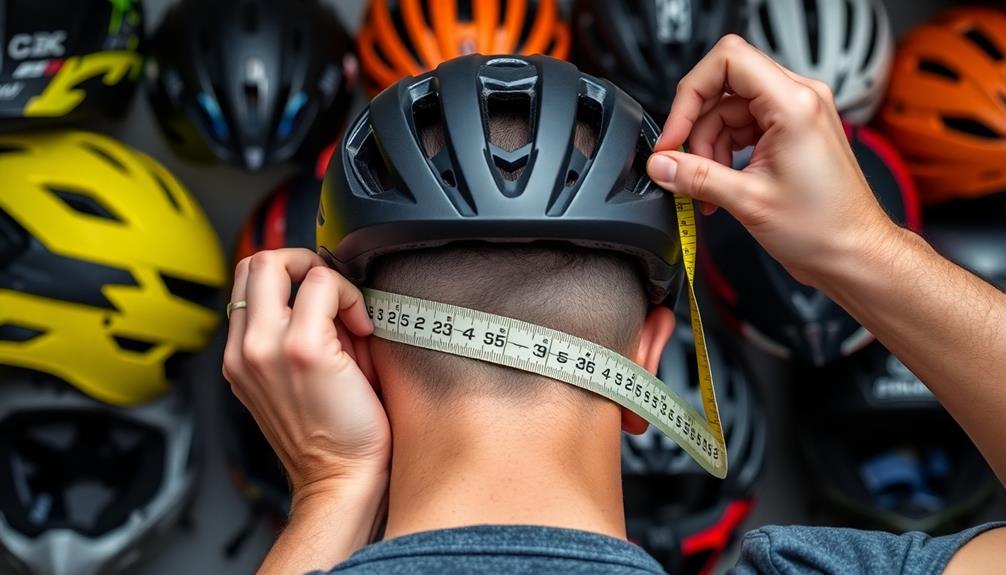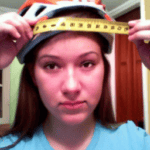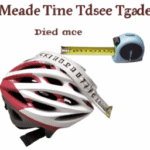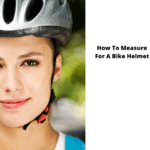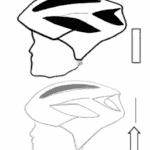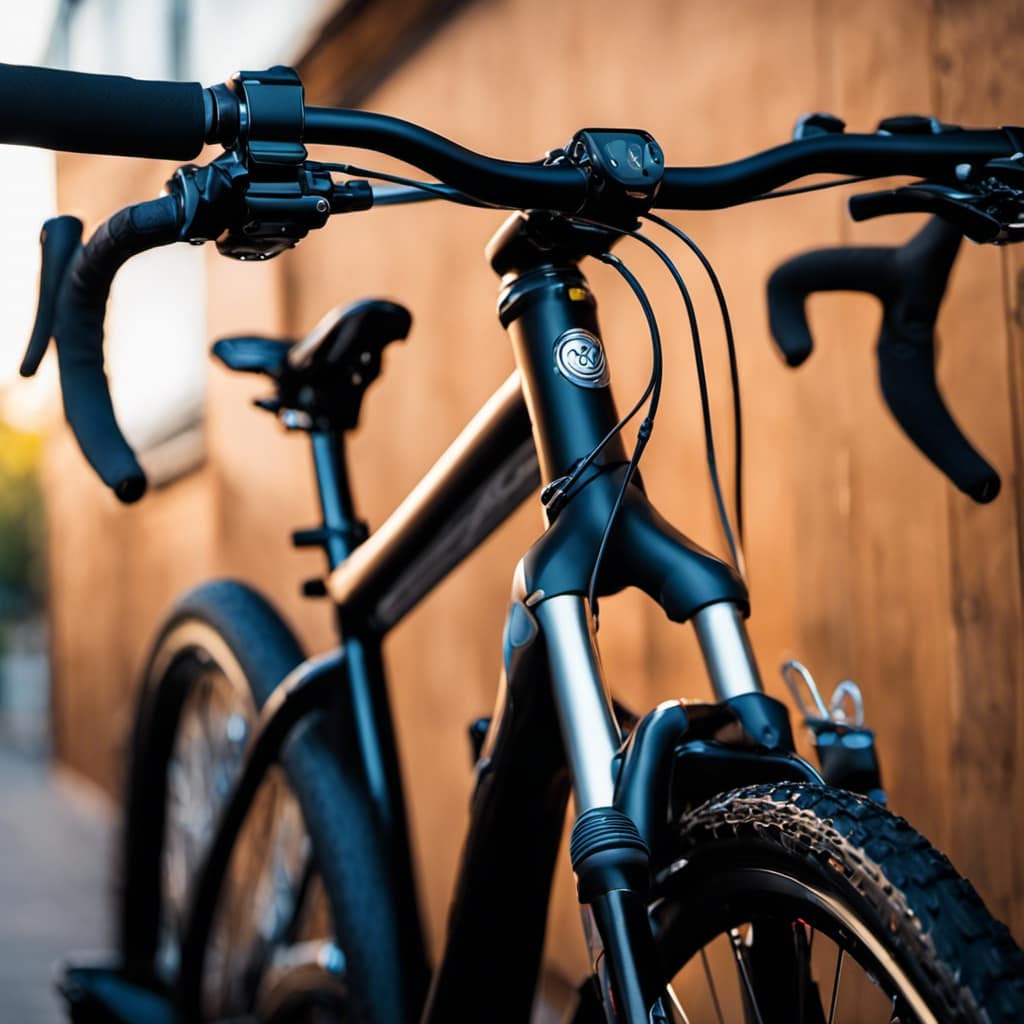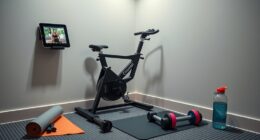Finding the perfect helmet fit is essential for your safety and comfort. Start by measuring your head's circumference with a soft tape measure, ensuring you get the right size. Consider your head shape, as it affects how snug the helmet feels. When trying on a helmet, it should sit snugly without pinching or shifting, and you should be able to fit two fingers under the chin strap. Always wear it for at least 30 minutes to test comfort. Regular adjustments and fit checks can enhance your riding experience, leading you to discover even more essential tips for helmet selection.
Key Takeaways
- Measure your head circumference accurately to determine the correct helmet size using a soft tape or string.
- Identify your head shape (Long Oval, Intermediate Oval, Round Oval) for optimal comfort and fit.
- Ensure the helmet fits snugly without excessive pressure and allows for a two-finger gap at the chin strap.
- Try on the helmet for at least 30 minutes to assess long-term comfort and check for pressure points.
- Choose helmets that comply with safety standards like DOT, Snell, or FIA for reliable protection during use.
Importance of Proper Fit
When it comes to your safety, a properly fitting helmet is non-negotiable. A helmet that fits well is vital for protecting your head during impacts, as it prevents movement that could result in severe injuries.
The importance of proper fit can't be overstated; if your helmet doesn't sit snugly, its protective features—like cushioning and energy absorption—won't work effectively. Additionally, just as with wood stoves, confirming that your safety equipment meets safety standards is indispensable for effective protection.
Comfort plays a significant role too. When your helmet fits correctly, you won't experience pressure points, allowing you to maintain focus on the ride without distractions. You should be able to move your head naturally without the helmet sliding around.
To verify your helmet fits properly, you need to adjust the strap so that there's a 2-finger gap at your chin. This keeps the helmet secure without causing discomfort.
Each time you wear your helmet, check that it meets these fit criteria, as even minor adjustments can make a big difference in your safety and comfort. Prioritizing the right fit not only enhances your riding experience but also safeguards you from potential harm.
Measuring Your Head

Getting the right helmet size starts with accurately measuring your head. Use a soft measuring tape or a piece of string to find your head circumference. Begin at the middle of your forehead, wrapping the tape around your head, just above your ears, and back to the starting point. This guarantees you're measuring where a helmet would typically sit for the best fit.
Here's a quick reference table to help you understand how your measurement translates to helmet sizes:
| Measurement (inches) | Measurement (cm) | Helmet Size |
|---|---|---|
| 20.5 – 21.3 | 52 – 54 | Small |
| 21.3 – 22.0 | 54 – 56 | Medium |
| 22.0 – 23.0 | 56 – 58 | Large |
| 23.0 – 24.0 | 58 – 61 | Extra Large |
Record your head size in either inches or centimeters, as this is essential for comparing against helmet size charts. If you're unsure about the fit, consider ordering a FIT ALL KIT with various sizing liners. Remember, head size can change over time, so measure regularly before buying a new helmet.
Understanding Head Shapes
Understanding your head shape is vital for finding a helmet that fits comfortably and securely. There are three primary head shapes to take into account: Long Oval, Intermediate Oval, and Round Oval. Each shape greatly influences how a helmet will fit you.
If you have a Long Oval head, it's longer from front to back than side to side. You'll need a helmet specifically designed to accommodate that shape. Additionally, selecting the right fit for your head shape can enhance your comfort during activities, similar to how choosing the right types of headphone jacks impacts your audio experience.
On the other hand, if your head is an Intermediate Oval, which is the most common in the U.S., you're in luck! This shape is slightly longer front-to-back and allows for a more versatile fit across many helmet styles.
For those with a Round Oval head, the measurements are nearly equal side-to-side and front-to-back. This shape may require specific helmet designs to guarantee a snug fit that doesn't pinch or slide.
Identifying your head shape is important, as it impacts both comfort and safety. A well-fitted helmet should hug your head securely without creating pressure points.
Selecting Helmet Styles
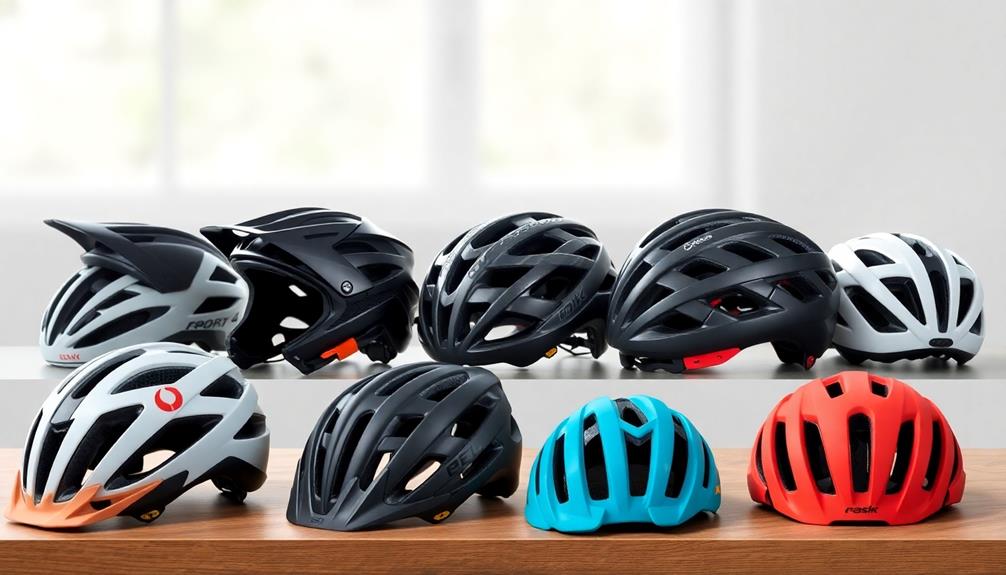
Choosing the right helmet style can greatly impact your riding experience and safety. You'll want to take into account the size and shape of your head when selecting a different helmet style.
Full face helmets provide maximum protection by enclosing your entire head, making them suitable for riders who prioritize safety and quietness. If you prefer good airflow and visibility, an open face helmet covers the top of your skull but leaves your face exposed, offering less protection.
Additionally, just as selecting the right projector type can enhance your viewing experience, choosing a helmet that fits well can improve comfort and safety on the road top 5 projectors for gaming enthusiasts.
Modular helmets offer a versatile option, combining features of both full and open face designs with a hinged chin bar. However, keep in mind they're typically heavier and noisier.
If you're looking for a helmet that can handle both street and off-road conditions, an ADV helmet might be the right choice, though they can compromise on weight and airflow.
For off-road enthusiasts, dirt helmets are lightweight and provide excellent airflow, but remember they require additional goggles for eye protection and lack a DOT rating.
Ultimately, selecting a helmet style that fits your head properly is vital for comfort and safety on your rides.
Trying on the Helmet
When you try on a helmet, make certain it fits snugly without causing discomfort and doesn't slide around on your head.
It's important to verify that your helmet is as secure as possible, just like how you'd monitor for any adverse reactions when introducing new foods to your pet, such as dogs and apples.
Adjust the chin strap to confirm it's secure yet comfortable, allowing for minimal slack.
Take a moment to wear the helmet and check for any pressure points while ensuring your field of vision remains clear.
Initial Fit Assessment
Often, trying on a helmet is the most essential step in guaranteeing a proper fit. Begin by selecting a helmet in your size, and place it on your head. It should fit snugly without excessive pressure, meaning it won't slide around. Adjust the chin strap to be secure yet comfortable, guaranteeing it helps hold the helmet in place without causing discomfort.
Additionally, consider how the helmet's design accommodates various activities, as certain features can enhance your overall experience, similar to how smart features enhance usability in robot vacuums.
Next, check your visual field. Make sure the helmet's visor or shell doesn't obstruct your view. You want to be able to see clearly in all directions.
After this, wear the helmet for a few minutes. This helps you assess comfort levels and identify any potential pressure points that might arise during extended use.
Don't forget to be aware of the return policy before making your purchase. Knowing you can easily exchange the helmet if it doesn't fit comfortably gives you peace of mind as you assess the fit.
Comfort and Adjustments
To guarantee maximum comfort and proper adjustments, it's important to pay close attention to how the helmet feels during wear. Start by ensuring the helmet fits snugly; it shouldn't move side-to-side or front-to-back. If you notice any shifting, it's time to make some adjustments.
Remember to regularly check and clean your helmet's interior padding, as air quality considerations can impact your overall comfort while riding. Next, adjust the chin strap for a secure fit, leaving a two-finger gap between the strap and your chin for added comfort.
Don't forget to assess your visual field—ensure you have a clear line of sight without any obstruction from the helmet's visor or shell. This is vital for safe riding. Wear the helmet for at least 30 minutes to evaluate comfort over time. During this period, check for any discomfort or pressure points that may arise.
Lastly, be mindful of airflow and noise levels while wearing the helmet. It should provide adequate ventilation to keep you cool, but it shouldn't create excessive wind noise that could distract you from riding.
Assessing Fit and Comfort

Finding the right fit and comfort in a helmet is essential for safety and enjoyment. To start, you need to measure your head's circumference accurately. This measurement helps you choose the correct size, making sure the helmet fits snugly without excessive pressure. A well-fitted helmet won't move side-to-side or front-to-back while you're riding.
Additionally, selecting the appropriate helmet can help enhance your overall experience, much like how merchant account credit processing can streamline payment processes for a business.
Adjust the chin strap so there's only a two-finger gap between the strap and your chin. This adjustment provides security without causing discomfort. As you wear the helmet, check your visibility; it should never obstruct your line of sight, and the visor must be positioned correctly to avoid interference.
After you've adjusted your helmet, wear it for at least 30 minutes. This duration helps you identify any discomfort or pressure points that mightn't be noticeable immediately.
Extended Wear Testing

Extended wear testing is an essential step in guaranteeing your helmet remains comfortable and functional over time. To conduct an effective extended wear test, wear your helmet for at least 30 minutes. This allows you to assess how it feels and fits during that period.
Pay attention to any discomfort or pressure points that may arise. Confirming your helmet provides adequate air circulation is critical, as it can help prevent overheating during long rides, similar to how air purifiers improve air quality for ideal health.
While testing, consider the following:
- Breathability: Your helmet should allow for adequate airflow, keeping you cool without feeling stifling.
- Wind Noise: Check how much wind noise you experience; it should be acceptable for your riding conditions to avoid distractions.
- Snug Fit: Monitor how the helmet sits on your head. It should remain snug without sliding or shifting.
- Comfort Level: Watch for any severe discomfort, which may indicate you need a different helmet style or size.
Ultimately, this extended wear test helps guarantee your helmet should fit perfectly, allowing you to find the perfect balance of comfort and protection for your rides.
Adjustments and Modifications
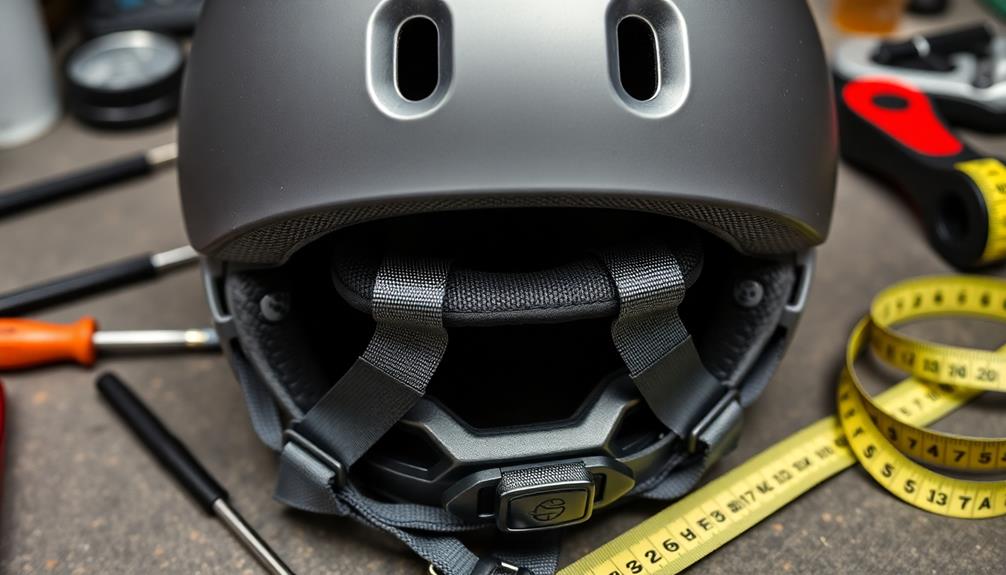
Making adjustments and modifications to your helmet can greatly enhance its fit and comfort. Start by considering the padding; different pads can improve helmet fit, but you should check compatibility first, as not all helmets allow for modifications.
Additionally, just like in the growing field of AI Online Jobs, where flexibility and adaptability are key, finding the right adjustments can lead to a better overall experience.
If your helmet feels a bit off, remember that it may experience a break-in period. After about 15-20 hours of use, it might adjust to the unique shape of your head, leading to a more comfortable fit.
For those with varying head shapes or sizes, custom cushioning options like thicker or thinner liners can provide that snug fit you're looking for.
However, be cautious with modifications. Altering helmet padding may void safety certifications, so always follow the manufacturer's guidance.
Verify that any adjustments you make don't compromise the helmet's safety features. A poorly fitted helmet can greatly reduce protection during an impact, which is the last thing you want.
Safety Standards Overview
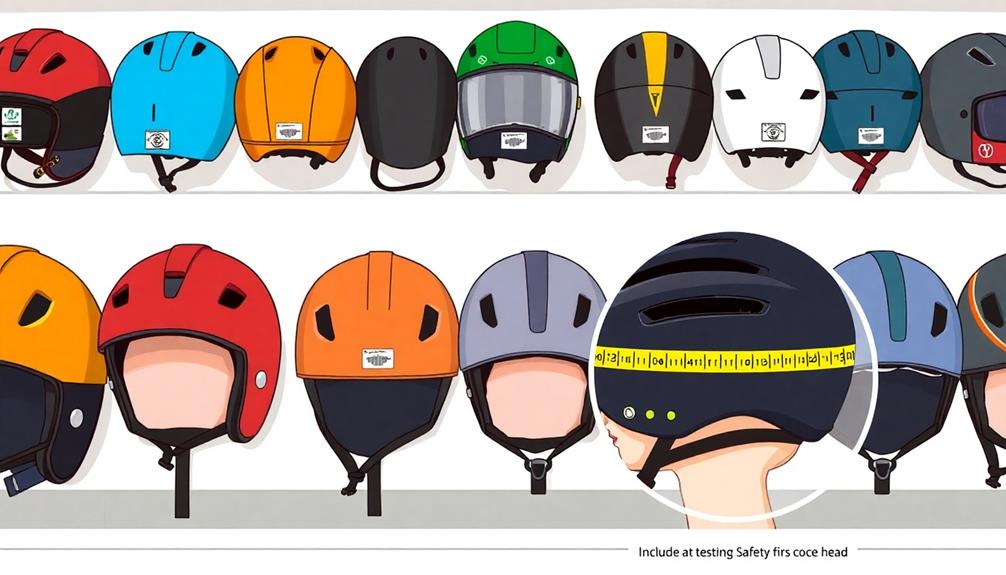
When it comes to helmet safety, understanding the key standards is vital for guaranteeing your protection on the road or track. Helmets must meet specific safety standards to provide adequate protection during impacts, just as proper planning in retirement can help avoid costly errors.
The most recognized certifications include:
- DOT (Department of Transportation): Guarantees the helmet meets U.S. safety standards.
- Snell Foundation: Offers rigorous testing standards; look for SA 2015 for motorsport helmets.
- FIA (Fédération Internationale de l'Automobile): Required for certain racing events, meeting international safety standards.
- Varying Acceptance Timelines: Different racing organizations may phase out older helmet models over time.
When selecting a motorcycle helmet, it's essential to choose one that not only fits well but also complies with the relevant safety standards for your intended use.
This guarantees that you're not just comfortable, but also secure while riding. Remember, a helmet that's certified to meet these standards can greatly reduce the risk of head injuries in the event of an accident.
Common Sizing Mistakes

Choosing the right helmet size can be tricky, and many riders make common mistakes that compromise safety and comfort. One frequent error is selecting a size based solely on age rather than accurate head measurements. This can lead to a poor fit and potential safety risks. It's also essential to take into account your head shape—whether it's long oval, intermediate oval, or round oval. This understanding plays a significant role in comfort and protection.
Measuring at the widest part of your head, just above the eyebrows, is important. Failing to do this can result in an inaccurate size selection. Additionally, assuming that all helmet brands fit the same can lead to sizing mistakes; always compare your measurements against each brand's specific size chart.
Lastly, don't overlook the need for adjustments with different padding or liners. These can help achieve a snug fit, which is necessary for safety.
Here's a summary of common sizing mistakes:
| Mistake | Consequence | Good Tip |
|---|---|---|
| Relying on age alone | Poor fit and safety risks | Measure your head accurately |
| Ignoring head shape | Discomfort and ineffective protection | Understand your head shape |
| Not measuring correctly | Inaccurate size selection | Measure at the widest part |
| Assuming uniform brand fit | Sizing errors | Check specific size charts |
| Overlooking padding adjustments | Loose fit | Adjust for a snug fit |
Frequently Asked Questions
How Do You Know Your Helmet Fits Properly?
To know your helmet fits properly, check it's level on your forehead, adjust the chin strap snugly, and verify it doesn't cause discomfort. Also, confirm it allows clear visibility without obstructing your view.
What Is the 2 2 2 Rule When Fitting a Helmet on Your Head?
You'd think fitting a helmet's easy, right? The 2 2 2 rule says you need a 2-finger gap above your eyebrows, snug chin strap, and minimal movement—ensuring safety while you look stylish!
How Do I Know My Head Size for a Helmet?
To know your head size for a helmet, use a soft measuring tape, wrap it around your forehead and above your ears, and record the circumference. Compare that measurement with the sizing chart for accurate fitting.
What Is the Correct Fit and Style for Your Helmet?
Choosing a helmet's like finding a trusty steed; it must fit snugly, protect you well, and match your riding style. Make certain it rests level, feels comfortable, and suits your head shape for ultimate safety.
Conclusion
Finding the perfect helmet fit is essential for your safety and comfort, so don't leave it to chance. Measure your head accurately, consider your unique shape, and try on different styles. Remember, a helmet that fits well can be the difference between riding with peace of mind and worrying about safety. So, when it comes to helmets, make sure you put your best foot forward—your head will thank you later!
